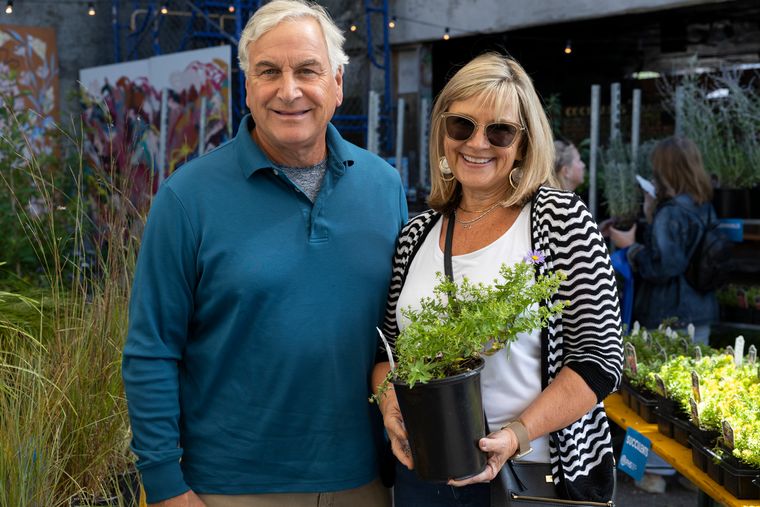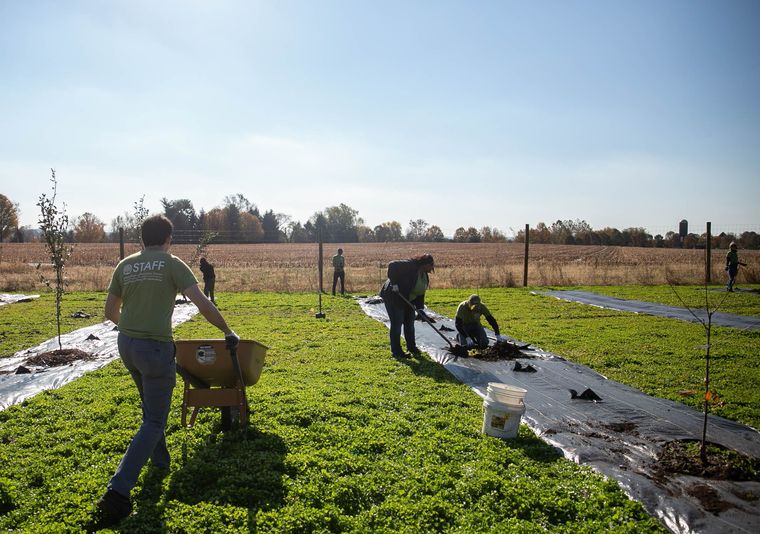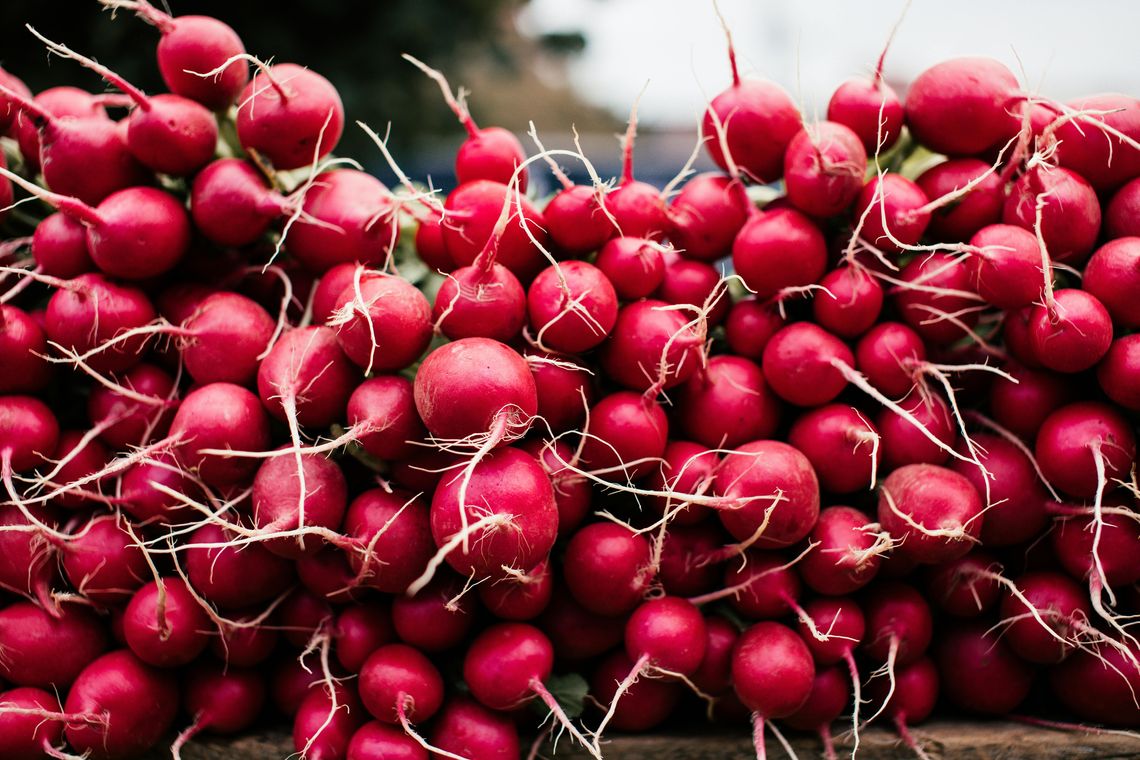



Guide to Fall Vegetable Gardening & Heat-Tolerant Crops
seasonal tips
plant care

By Sally McCabe, Associate Director of Community Education
As the dog days of summer start to mellow, many gardeners might think their growing season is winding down. But for horticulture enthusiasts with a little know-how, it's actually just the beginning of fall vegetable gardening! The shift from the relentless summer sun to the cooler, gentler days of autumn provides a fantastic opportunity to extend your harvest well into the cooler months. The trick? Knowing when to plant fall vegetables and selecting heat-tolerant vegetables that can survive the end of summer, as well as the cooling days ahead.
Join PHS and enjoy free access to Know to Grow webinars, plus discounts on events, exclusive invites, and more.
When to Plant Fall Vegetables: Timing is Everything
One of the biggest lessons I’ve learned about fall gardening is that it all comes down to timing. Unlike spring planting, where you're racing against the last frost, in fall, you're racing towards the first frost. To plan effectively, you need to "do the math". Consider your average first frost date planting window – here in the Mid-Atlantic, we typically have about 120 days from early July until that first significant chill. This is your fall planting window.
Here’s how to plan for your fall vegetable garden:
- Look at the “days to maturity” on your seed packets.
- Count backward from your area's first expected frost.
- This will help you determine when to plant fall vegetables for a successful harvest.
For instance, around August 10-15, here in Southeastern PA, we can happily start seeding leafy greens and a fresh round of root crops. This is also the prime time to get those cole crops like cabbage, cauliflower, collards, and broccoli into the ground as seedlings. They thrive in cooler weather and develop a much sweeter taste as the temperatures drop. If you can't find transplants at your local garden center (sometimes heat delays their availability), start them indoors where you can control the temperature, or in a shadier part of your garden.

Heat Tolerant Vegetables That Thrive in Late Summer and Fall
While some summer crops are past their prime by mid-August, there are plenty of vegetables that grow well in heat and can give you a fantastic fall garden bounty. Think of them as your summer-to-fall vegetables.
- Okra: This often-overlooked gem absolutely loves the heat and matures quickly, in about 50-60 days. Keep it picked daily, or the pods will get tough.
- Eggplant and Peppers in hot weather: While it might be getting late for new plantings of these by mid-August, earlier plantings of heat-tolerant varieties can continue producing beautifully into fall if given the right care. Make sure your eggplants and peppers receive ample sunlight, consistent moisture, and protection from pests and diseases. Mulching helps retain moisture and suppress those pesky weeds, while staking may be necessary to support the plants as they grow larger and produce fruit.
- Tomatoes: My personal experience shows that some tomatoes, especially certain cherry varieties, can hang in there well past the first frost with a bit of protection. If you’re pushing a late crop, look for "Italian storage tomatoes" or 'pomodoro d'inverno' varieties like Annarita or Piennolo Rosso and Giallo, which are known for ripening late and storing well.
- Sweet Potatoes: These glorious vines need a long growing season (around 120 days). If you get them earlier in the summer, they'll be producing well into fall. Planting late may mean small or no actual potatoes, but the edible greens will hang in there until light frost.
- Malabar Spinach: Not a true spinach, but a vining plant that thrives in heat and humidity, offering a fresh, leafy green alternative when traditional spinach bolts.
- Herbs: Many herbs like basil, dill, and cilantro are relatively fast-growing and can be sown from seed in summer for a fall harvest. Cilantro in particular appreciates the slightly cooler temperatures as autumn approaches.
- Leaf Lettuce & Arugula: These quick-maturing greens (as little as 45 days for lettuce) can be succession planted every 2-3 weeks from July through October for a continuous harvest. Arugula will bolt quickly in summer heat, but the fall provides ideal conditions for tender leaves.
- Radishes: These are the instant gratification crop of the fall garden, maturing in a mere 25-30 days.

DIY & Organic Practices to Prepare Your Garden for Fall Vegetables
Beyond choosing the right vegetables for fall, how you care for your plants organically can make all the difference.
- Mulch, Mulch, MULCH! Seriously, I can't emphasize this enough. A good layer of mulch around your plants helps retain soil moisture, keeps soil temperatures more consistent, and suppresses weeds. For fall plantings in still-warm soil, consider a light-colored organic mulch, such as straw or shredded leaves, to reflect heat and keep the soil cooler for those new seedlings.
- Water Wisely: When planting in heat, "baby" your seeds and transplants. For transplants, thoroughly soak the pot before planting, then fill the planting hole with water before placing the plant. For seeds, create a trench, fill it with water, sow your seeds, and then cover them. Water well to settle the soil. You might even cover seed rows with cardboard for a few days to protect emerging seedlings from intense sun. Consider planting "indicator plants" like basil or coleus; they'll visibly wilt when it's time to water, recovering once hydrated.
- Compost is Key: A healthy garden starts with healthy soil. Continue to nurture your compost pile, ensuring it's a balanced mix of "greens" and "browns". Adding finished compost to your garden beds before planting provides a slow-release, organic nutrient boost for your fall crops.
- Succession Planting: Don't just plant once! For quick-maturing crops like lettuce, arugula, and radishes, sow small batches every few weeks. This strategy ensures a continuous harvest rather than a single overwhelming one.
- Pest Vigilance: Fall gardens can still attract pests. Regularly inspect your plants and opt for organic pest control methods like hand-picking or insecticidal soap if needed. Covering late cole crops with row cover immediately after planting helps hold off late-arriving or already-present Harlequin bugs.
- Need Tools or Garden Support? Whether you're looking for help getting started or need to borrow equipment, PHS’s Community Gardens program offers resources like our Tool Lending Library and seasonal tips to support your fall vegetable gardening goals.

When to Plant Fall Vegetables for a Bountiful Harvest
Successful fall garden planning involves a blend of smart plant choices, timely planting, and diligent organic care. By selecting heat-tolerant crops for fall and understanding your local frost date calculator, you can transform your summer garden into a vibrant, productive space for autumn. So, roll up your sleeves, embrace the mild fall weather, and get ready to enjoy an additional season of homegrown goodness!


